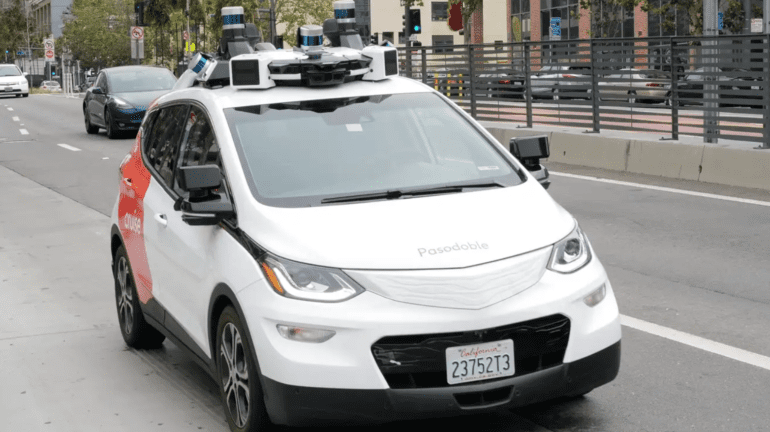TL;DR:
- Silicon Valley’s pursuit of self-driving cars has been marked by promises and setbacks.
- Recent developments have expanded operations for major “robotaxi” companies, including Waymo and Cruise.
- Regulatory approvals allow for autonomous taxis to operate without human safety operators.
- However, incidents involving Cruise’s autonomous taxis have raised concerns.
- Autonomous vehicles struggle to interpret complex road interactions and cues from other drivers.
- Expert analysis suggests that while self-driving cars excel in trajectory prediction, they struggle to understand human behavior on the road.
Main AI News:
In the relentless quest for self-driving vehicles, Silicon Valley has dangled tantalizing promises before us for years. Yet, amidst the incessant buzz, technological imperfections have consistently dashed these aspirations. However, recent times have painted a different picture—one that suggests the dawn of a driverless era might finally be upon us. A pivotal verdict, delivered on August 10, by the California Public Utilities Commission (CPUC), has granted expanded operational scope to two prominent “robotaxi” enterprises—Google’s Waymo and GM’s Cruise. After rigorously testing their automated fleets in the Bay Area over the years, these companies have been granted unprecedented autonomy to establish their presence and monetize their autonomous carriages. This is undoubtedly a seismic shift for the autonomous transportation sector, marking the inaugural mainstream foray of self-driving cars.
According to CPUC’s pronouncement, Waymo is now authorized to engage in “commercial passenger service” through its autonomous vehicles, enabling them to traverse San Francisco and select parts of San Mateo county unrestricted, 24/7, reaching speeds of up to 65 mph, regardless of prevailing weather conditions. In a similar stride, Cruise has secured analogous privileges within San Francisco, with speeds capped at 35 mph. Interestingly, neither of these industry players is mandated to deploy human “safety operators,” a customary fixture that has historically supervised the operation of automated vehicles.
In essence, as of last week, it appeared that both titans were primed to seize the wheel and accelerate into the future. Alas, this moment of triumph was abruptly punctuated by a sequence of untoward incidents. Late on a Thursday evening, a Cruise taxi collided with a fire truck in San Francisco’s Tenderloin district, causing a Cruise employee to be hospitalized. In swift succession, another Cruise vehicle stalled at a city intersection, precipitating considerable traffic congestion. Overnight, Cruise’s achievements seemed to dissolve. By Friday, the Department of Motor Vehicles intervened, decreeing a 50% reduction in the number of active Cruise vehicles on the city’s streets, citing “recent concerning incidents” involving their vehicles. Complying with the directive, the company promptly scaled back half of its fleet.
This unforeseen turn of events has ushered autonomous travel into a complex juncture. With regulatory barriers eased, the ascendancy of these self-driving cars in our daily lives appears inevitable. The envisioned future paints a panorama where routine journeys are transformed into luxurious automated experiences. Envision your robotaxi gliding along the freeway, leveraging its finely tuned algorithms to navigate, while you indulge in a nap or a movie on your iPhone. Yet, is this utopian portrayal likely to materialize? Alternatively, could self-driving vehicles inadvertently congest intersections, trigger fender benders, or even worse?
Barry Brown, a distinguished computer science professor affiliated with both Copenhagen and Stockholm University, asserts that despite the fanfare, self-driving cars still lag considerably behind the requisites for negotiating intricate road systems. Drawing from years of research in this field, Brown pinpoints a pivotal deficiency: these autonomous marvels struggle to decipher the intentions of fellow drivers. While humans excel at interpreting such nuances, self-driving cars falter in this domain. Brown elucidates that roadways function as social arenas, replete with subtle interpersonal cues that guide drivers’ interactions with their environment and other road users. Unfortunately, these cues evade the perception of self-driving cars, which are akin to unsocialized children.
“We don’t let five-year-olds drive. We wait until people are at an age where they have a lot of experience understanding how other people move,” says Brown. “We’re all kinda experts at navigating through crowds of people and we bring that understanding to bear when we’re driving as well. Self-driving cars, while they’re very good at predicting trajectory and movement, they struggle to pick up on the cues of other road-users to understand what’s happening.” Brown emphasizes that navigating complex urban scenarios will remain an elusive feat for these vehicles. “You’ve got these basic issues of things like yielding, but then if you get more complicated situations—if there are cyclists, when there are pedestrians on the road, when there’s very dense traffic, like in New York—these problems escalate and become even harder.”
Conclusion:
The recent green light for Waymo and Cruise to venture further into autonomous transportation signals a significant stride in the market. However, the incidents that followed underscore the complexity of navigating urban landscapes devoid of human intuition. As the market grapples with safety concerns and technological limitations, a truly autonomous driving future remains both promising and uncertain. Businesses in this sector must balance innovation with the intricacies of real-world road dynamics to ensure a seamless and safe transition into the age of self-driving vehicles.

